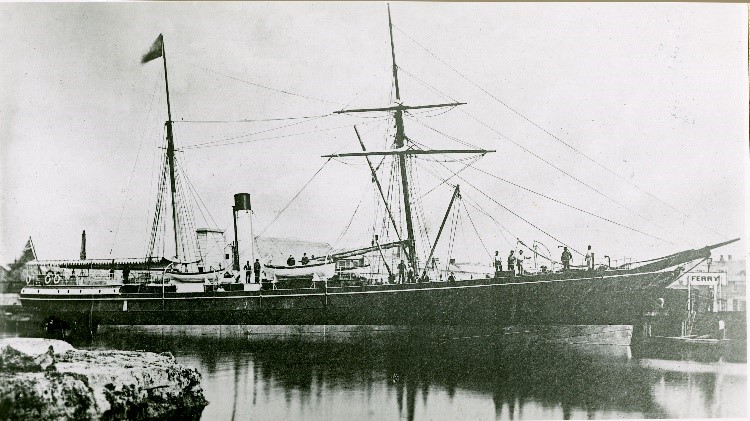Media Statement: CRA urges Government to do more for Asylum-Seekers and Refugees
July 3, 2019Catholic Religious Australia (CRA) applauds the decision of the Australian Government to rescue eight Australian orphans trapped in Syrian refugee camps.

Catholic Religious Australia (CRA) applauds the decision of the Australian Government to rescue eight Australian orphans trapped in Syrian refugee camps in the recent secret operation. CRA urges the Government to continue to act courageously on behalf of refugees, especially young people.
There are approximately 50 Australian women and children remaining in Syrian refugee camps who are now suffering a backlash from the rescue operation. Accused of being traitors, their lives are in danger. The repatriation of these endangered families needs to be a priority for the Australian Government, for the sake of the physical and psychological safety of innocent children.
Media Statement: CRA urges Government to do more for Asylum-Seekers and Refugees
Mary MacKillop: Patron of Brisbane Archdiocese
June 29, 2019Mary, Patron of the Brisbane Archdiocese
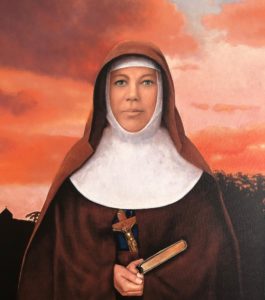
Mosquito plague, high humidity and heat greeted Mary MacKillop and her Sisters when they arrived in Brisbane on New Year’s Eve 1869 – just three and half years after the foundation of the Congregation in Penola. What warrior women they were, with hearts set on fire for God’s mission. Little did they know what indescribable challenge and pain Queensland would be for Mary and the Congregation.
Mary and the Sisters had been invited by Bishop Quinn to set up schools in Queensland, so they came well equipped with the proven Woods-MacKillop system of parish-based schools. They immediately hopped in, opened schools in Brisbane and very quickly expanded their presence to other places in country Queensland.
The story of the journey between 1869 and when the Archbishop John Bathersby petitioned Rome to make Mary MacKillop the Patron of the Archdiocese is told here.
Feast of the Sacred Heart
June 28, 2019Personal Reflection on the contemporary relevance of devotion of the Sacred Heart.
 Whilst writing a reflection for the Feast of the Sacred Heart, my memory takes me back to the first time I gazed upon an image of the Sacred Heart. I was about eight or nine years old, living in our humble rental home in North Fitzroy, Melbourne with my parents, brother and sister. My mother placed the image on the pedestal in her bedroom, accompanied with a Legion of Mary brochure and a statue of Our Lady. There she prayed every night that my father’s employment as a railway worker would enable the family to purchase their own home. Eventually this happened when we moved into our new family home in North Carlton when I was 12 years old. The framed image of the Sacred Heart came with us and remained in the family home for the next sixty years! It now resides in my sister’s home to this day.
Whilst writing a reflection for the Feast of the Sacred Heart, my memory takes me back to the first time I gazed upon an image of the Sacred Heart. I was about eight or nine years old, living in our humble rental home in North Fitzroy, Melbourne with my parents, brother and sister. My mother placed the image on the pedestal in her bedroom, accompanied with a Legion of Mary brochure and a statue of Our Lady. There she prayed every night that my father’s employment as a railway worker would enable the family to purchase their own home. Eventually this happened when we moved into our new family home in North Carlton when I was 12 years old. The framed image of the Sacred Heart came with us and remained in the family home for the next sixty years! It now resides in my sister’s home to this day.
My devotion to the Sacred Heart has ebbed and flowed over time. During my early years, I did not understand the origins of devotion to the Sacred Heart. Perhaps I was not alone in my experience. In Mary MacKillop and Julian Tenison Woods’ time, devotion to the Sacred Heart was primarily one of external devotion. Although the more I reflect on their spirituality through reading their letters and recognised biographies, my appreciation that their deep love of the Heart of Jesus was a central theme in their spirituality which they practised with enduring love.
As we approach the Feast of the Sacred Heart, I revisit the origins surrounding the reasons for the sub-title ‘of the Sacred Heart’ being added to our name as Sisters of Saint Joseph.
Mary Cresp rsj provides a background:
The words: “orientation of the charism was to be perpetuated,” clarified for me the connection between devotion to the Sacred Heart and living the Josephite charism. The connection was evident in the spiritual lives of Mary MacKillop and Julian Tenison Woods.
 Memories continue to linger as I continue to write this reflection. My mother’s quiet devotion to the loving Heart of Jesus through daily prayer comes to mind. When I entered the Sisters of Saint Joseph of the Sacred Heart in the sixties, my mother often alluded to her image of the Sacred Heart with prayerful gratitude for my vocation. Such was her simple, deep faith and trust in the power of prayer. Prayer for her was a daily activity. Her well-worn Sunday missal, which is in my possession today, reminds me of her devotion to the Indwelling Presence of Jesus in the Eucharist.
Memories continue to linger as I continue to write this reflection. My mother’s quiet devotion to the loving Heart of Jesus through daily prayer comes to mind. When I entered the Sisters of Saint Joseph of the Sacred Heart in the sixties, my mother often alluded to her image of the Sacred Heart with prayerful gratitude for my vocation. Such was her simple, deep faith and trust in the power of prayer. Prayer for her was a daily activity. Her well-worn Sunday missal, which is in my possession today, reminds me of her devotion to the Indwelling Presence of Jesus in the Eucharist.
Continue reading Sr Yvonne Harte’s article below:
A personal reflection on the contemporary relevance of devotion to the Sacred Heart of Jesus
Yvonne Harte rsj
Images provided by Sr Yvonne Harte. Used with permission.
Remembering Sister Anne Derwin
June 26, 201910 September 1949 – 23 June 2019
Sister Anne Derwin of the New South Wales Region died peacefully on 23 June 2019 at The Mater Hospital, North Sydney, NSW.
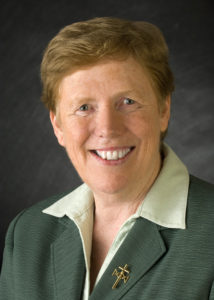 Anne, who became a Sister of Saint Joseph fifty years ago, trained as a teacher of Maths, Science and Religious Education. She taught these subjects at Saint Joseph’s East Gosford, Mount Saint Joseph’s, Milperra and Saint Joseph’s Kogarah, before becoming principal of the Milperra school. Subsequently, she was appointed to the New South Wales Province Leadership Team. Next, she spent six years as Provincial of the NSW Province of the Sisters of Saint Joseph and, at the end of her time in that role, moved on to the directorship of Saint Joseph’s Spirituality and Education Centre, Kincumber South.
Anne, who became a Sister of Saint Joseph fifty years ago, trained as a teacher of Maths, Science and Religious Education. She taught these subjects at Saint Joseph’s East Gosford, Mount Saint Joseph’s, Milperra and Saint Joseph’s Kogarah, before becoming principal of the Milperra school. Subsequently, she was appointed to the New South Wales Province Leadership Team. Next, she spent six years as Provincial of the NSW Province of the Sisters of Saint Joseph and, at the end of her time in that role, moved on to the directorship of Saint Joseph’s Spirituality and Education Centre, Kincumber South.
She then undertook the management of Mary MacKillop Place, North Sydney. Her time there was short-lived for in the year 2007, Anne was elected Congregational Leader of the Sisters of Saint Joseph. While she was in that role, she and the Sisters celebrated the canonisation of Saint Mary MacKillop and four Congregations of the Australian/New Zealand Federation of Sisters of Saint Joseph moved towards “fusion” with the Sisters of Saint Joseph of the Sacred Heart. Her contribution to the Congregation she treasured and to religious women and men across Australia, through her presidency of Catholic Religious Australia, impacted in significant ways on the lives of many Religious Congregations and individuals.
Her term of office expired six years ago and since then Anne used her leadership skills and expertise as chair and member of several Boards, and acted as facilitator for Religious Congregations, especially during their Chapters and similar events. As her health declined and she became physically weaker, she maintained her passion and interest in public and current affairs. Even up to her last days, she continued her commentary and reflections on local and world events and, as her illness progressed, her family, friends and religious sisters gathered around her to give her support and share in her wisdom.
We continue to live in gratitude for her personal and leadership gifts, her organisational skills, and her sense of prayer and the presence of her God in her life.
The Mass of Christian Burial for Anne will be held at St Mary’s Church, Ridge Street, North Sydney, on Saturday 29 June at 10am and will be followed by the Rite of Committal at Macquarie Park Cemetery. Saint Mary MacKillop’s funeral Mass was celebrated in this church almost exactly 110 years ago.
Feast of the Body and Blood of Christ
June 23, 2019Bread of Presence… Corpus Christi.
 My understanding and appreciation of the feast of Corpus Christi has been influenced over recent years by the writings of Teilhard de Chardin, Richard Rohr and Ilia Delio. This feast is for me a celebration of the all-encompassing Presence of Christ in the Universe. As a lover of nature and in my frequent experiences of walking in places of beauty I have an ever-deepening awareness that I am surrounded by the Body of Christ and that I live in the Body of Christ.
My understanding and appreciation of the feast of Corpus Christi has been influenced over recent years by the writings of Teilhard de Chardin, Richard Rohr and Ilia Delio. This feast is for me a celebration of the all-encompassing Presence of Christ in the Universe. As a lover of nature and in my frequent experiences of walking in places of beauty I have an ever-deepening awareness that I am surrounded by the Body of Christ and that I live in the Body of Christ.
As Saint Paul writes…
Last year Richard Rohr had a series of meditations on the Eucharist. He spoke of those familiar words of Jesus, “This is My Body” and “This my Blood”. In his explanation he spoke of Jesus expressing his desire for us to be drawn into the reality that when we hear these words “This is My Body” we are being invited into an awareness of the sacredness of all humanity, of all creatures and all that exists.
Teilhard de Chardin expresses similar sentiments when he writes;
The words,“This is My Blood” are a call to recognise the presence of Christ suffering in our world today. The celebration of the Eucharist and the feast of Corpus Christi are a reminder to me to become the Bread of Christ’s presence and to appreciate the Source of this Presence in every encounter, and in all of creation.
The recent terrorist attack in Christchurch and the way people in New Zealand and the whole world responded have really given me a fuller appreciation of the Body of Christ.
In its aftermath we frequently heard the words:–
“The eyes of my heart were enlightened” (Ephesians 1:18) as I listened to and witnessed the daily outpouring of love through the donating of food and money, through stories of compassion, of people joining Muslims in Mosques, of hundreds of young and old gathering for Vigils, Throughout the country there was a felt sense of deep empathy and a growing desire to be in communion with our Muslim brothers and sisters. I grew in a deeper appreciation of the Body of Christ manifest through the encounters of love which were nourishing and sustaining those whose lives were traumatised.
The feast of Corpus Christi awakens us to the truth expressed in the words of Saint Teresa of Avila:
Yours are the eyes through which
he looks compassion on the world.
Lyndall Brown rsj
Image Communion Wine Bread by Bouf16 obtained from pixabay. Used with permission.
Sisters of Saint Joseph Welcomed
Father Woods welcomes the Sisters of Saint Joseph at Port Adelaide, 23 June 1867.
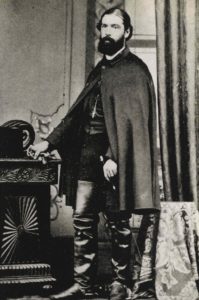
On Tuesday, 25 June 1867, the following news item appeared in the Adelaide Advertiser. While the style of writing is not that of Father Woods himself, there is no doubt that he would have provided the information contained in it. Maybe, the writer was present in the church when Woods introduced the so-called sisters to the local congregation. What is clear is that Father Woods was canvassing for the Sisters of Saint Joseph, without mentioning that the two women from the boat were not easily recognisable as Sisters—they were very young and were dressed in black according to the style of the day. At no point did he mention the fact that there were just three Sisters of Saint Joseph, and that none of them had as yet become fully professed members of the Congregation.
What follows in the account of their first day in Adelaide as reported in the paper:
Sisters of St Joseph, your presence today affords us much pleasure and we feel infinite gratification to be the first to welcome you to the diocese and we are pleased that you landed on the Sunday within the Octave of Corpus Christi. Another cause of gratification to us is to welcome you within the walls of this Church.
The Rev. Father Woods replied for the nuns:
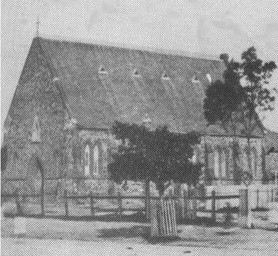
After that matters moved quickly and, on the following Tuesday, 2 July, they took charge of the Cathedral Hall School in central Adelaide dressed in their newly-designed religious habits.
Sr Marie Foale
Photos provided by Sr Marie Foale. Used with permission.
Refugee Week 2019
June 16, 2019In 2019, Refugee Week will be held from Sunday 16 June to Saturday 22 June.
Here I sit, staring at a blank page, wondering what to write? It’s Refugee Week.
I visualise delightfully coloured cultural clothing of the migrant populations that have graced, our ‘bounteous plains,’ in the past. Being realistic, the WWII immigrants had many challenges after they arrived on our shores. Their blessing: they were not ‘unlawful maritime arrivals.’[1] They could come to Australia as a family!
Not so, ‘for those who’ve come across the seas’ in leaky old boats, seeking asylum!
I work with asylum seekers and refugees. They grace my life.
So many stories to tell. I quiver in shame.
 Tonight, I met with a man who came to Australia 10 years ago. His application for his wife (technically ‘Partner’) and children’s visa was lodged with the Department in 2013. Six years ago! What could I say or do but acknowledge his pain, whilst recognising the graced accident of my birth in Australia.
Tonight, I met with a man who came to Australia 10 years ago. His application for his wife (technically ‘Partner’) and children’s visa was lodged with the Department in 2013. Six years ago! What could I say or do but acknowledge his pain, whilst recognising the graced accident of my birth in Australia.
A couple of weeks ago, I had frequent visits from a gentle man (let’s call him Ali), visiting from Sydney. Sr Pat Sealey rsj, our now retired Migration Agent, had completed the documentation for his Partner visa application. He has four children. Last year, Ali visited his family in a country other than the country from which he sought asylum. He has a fifth offspring now. She is almost four months old.
It’s time to practise some Ignatian contemplation. Ali had his phone (not the latest and greatest model) sitting on the edge of my desk. There I sat gazing at the proud and loving father gooing and gaahing into the phone to attract the attention of the baby. The baby in downtown Quetta, the father and his mobile in Adelaide. I could not help but wonder how successful the ‘bonding’ attempt will be, in the long term?
Me, the aging white woman, with bare arms and no scarf, met Ali’s nine-year-old daughter and his wife. Again, I whimpered an apology to mother and child. It’s my Country preventing the family living together. Their husband and father is a recognised ‘refugee.’
Why had Ali taken time off to travel to Adelaide, over and above, calling at the office in the hope of ‘good news’ about the family’s visa. He came to bury his mate, a man with whom he travelled to Australia, who had died of natural causes. Faithful to the friendship, he organised the burial, within their religious tradition, travelled three and a half hours from Adelaide, to retrieve the man’s effects and return them to family, overseas. Ali now intends to financially support his friend’s family, as well as his own.
Denise MacKay rsj
Visit the' Refugee Week' website
Footnote:
[1] Migration Act 1958 (Cth) s 5AA.
Logo obtained from the Refugee Week website. Used with permission.
Trinity Sunday 2019
Trinity is all about relationship.

I would like to share my thoughts with you about this beautiful icon which hangs in the foyer of our aged care facility in Melbourne. Modelled on the Andrei Rublev 15th Century Russian icon ‘The Trinity’, this icon by Judith Mehr in 2016, invites us not only to come to the table, sit awhile and listen to the conversation, but also to reach out to comfort Omran, the young Syrian refugee. We are lured into this deep centre of persons with compassion and reassuring gentleness to this bloodied, tiny child. He sits, embraced in the warmth of the three persons we call the one God. Each one of us is invited to sit within this divine circle to join in the flow of mutual friendship and love.
Where would you put yourself in this picture?
Rowan Williams, former Archbishop of Canterbury reminds us that the place ‘where God happens’ is ‘between each other’. [1] Where is that daily place where God happens for us in our neighbourhoods, with refugees, in church or where humanity is celebrated or diminished?
I feel grateful to the late Fr Denis Edwards who presented lectures to delegates at the 2013 General Chapter. From my notes I read again of how he spoke of Richard of St Victor of the 12th Century who referred to the Trinity as Father as Lover, the Son as the Beloved and the Holy Spirit as the love between them. He went on to explore the giving nature of God’s own self, the movement of mutual love and the experience of friendship as ways of understanding God. God is always Trinity, beings giving and receiving; always Communion – always in motion.
Richard Rohr, in his recent online reflections on the Trinity writes:
Whatever is going on in God is a flow, a radical relatedness, a perfect communion between Three – a circle dance of love. God is absolute friendship. God is not just the dancer; God is the dance itself. [3]
‘God moves towards us so that we may move toward each other and thereby toward God. The way God comes to us is also our way to God and to each other: through Jesus Christ by the power of the Holy Spirit. This is our faith, confessed in creed and celebrated in the sacraments.’ [4]
What does this faith feel like when we live it?
Kerrie Cusack rsj
Footnotes:
[1] Rohan Williams: Where God Happens: Discovering Christ in One Another, New Seeds, Boston. 2005
[2] Simon Pedro Arnold OSB: LCWR Assembly 2018
[3] Richard Rohr: Daily Meditation, Trinity 5 May 2019 Meditations@cac.org
[4] Richard Rohr: Meditation, Practical Participation 13 May 2019 Meditations@cac.org
Painting entitled:“Omran Angels are Here’’ by Judith Mehr. Donated by Br Mark O’Connor on behalf of the O’Connor family in April 2017, provided by Kerrie Cusack rsj. Used with permission.



